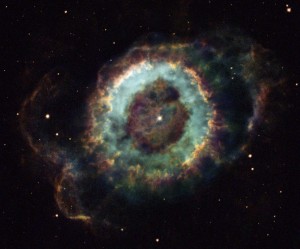“Nothing’ is the force / That renovates the World” –Emily Dickinson, by homely gift and hindered Words
I said about nothing
little
only that They guess it’s dark
because light is something
They say most of everything is dark
a push pull dark –
dark speeding up
dark slowing down
currently dark energy equals
seventy percent of everything and it’s gaining
dark matter still has twenty-five
so five percent is the what else we love or not
jusst five the something: the light, the obdurate rock, the soft skin, all
the matter that is the famous form of energy.
But only for now
I was right about that
Renovation isn’t balanced or for the moment on a rhyming grid
one nothing swells as the other nothing shrinks
All nothing actions are
nothing in the brain –the state some seek– a pheromone of fear
or a burst of synaptic joy
We get it really!
Who do you think you are to
know nothing?
to fear nothing
is all there is
To say
there is nothing
to be afraid of
Written after attending the William Bronk Symposium (sponsored by Talisman House and Columbia University, April 13-14, 2012, organized by Burt Kimmelman.
Note on the photograph: it is NGC 6369: The Little Ghost Nebula. Credit: Hubble Heritage Team, NASA. From APOD.nasa.gov (Astronomy photo of the day) – free daily photos. This one, cataloged as NGC 6369, was discovered by Basil’s namesake, the 18th century astronomer William Herschel. (Yes, his full name is Basil Herschel King.) This nebula in the constellation Ophiucus is relatively faint and has acquired the popular nickname Little Ghost Nebula. Planetary nebulae like this one are, in general, created at the end of a sun-like star’s life as its outer layers expand into space while the star’s core shrinks to become a white dwarf. The white dwarf star, seen near the center of this image, radiates strongly at ultraviolet wavelengths and powers the expanding nebula’s glow. The nebula’s main ring structure is about a light-year across and the glow from ionized oxygen, hydrogen, and nitrogen atoms are colored blue, green, and red respectively. Over 2,000 light-years away, the Little Ghost Nebula offers a glimpse of the fate of our Sun, which could produce its own planetary nebula about 5 billion years from now.

